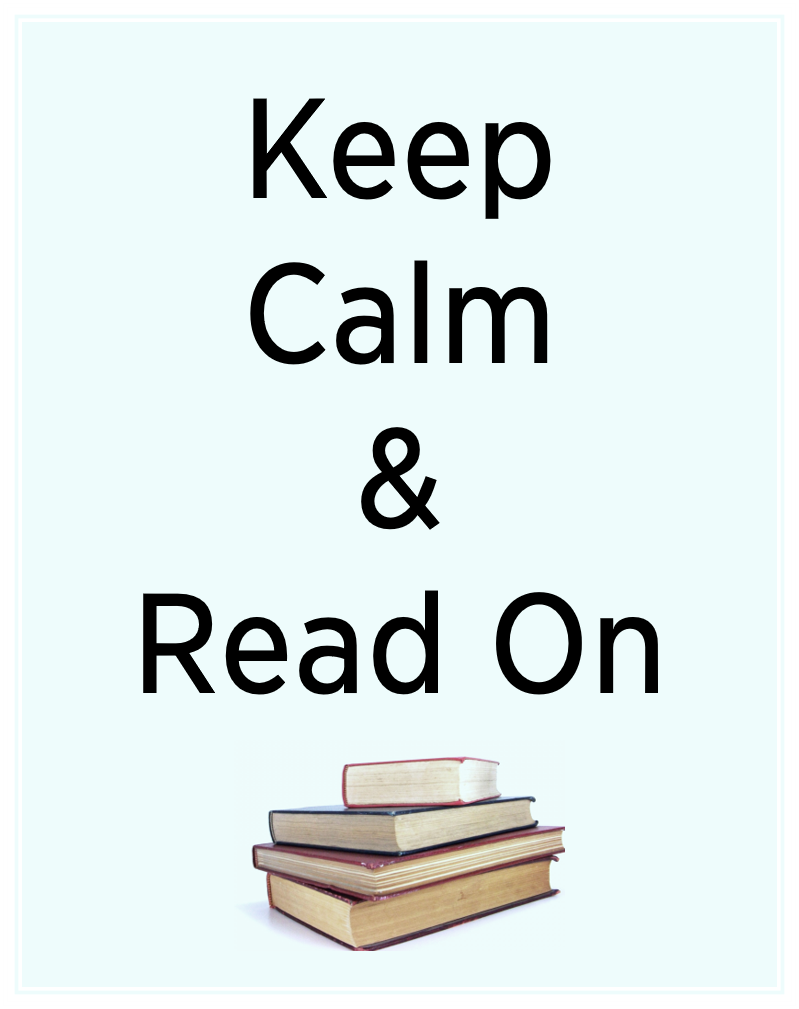2019 Summer Reading List
Published by: WCET | 5/29/2019
Tags: WCET
Published by: WCET | 5/29/2019
Tags: WCET
Hello and welcome to the 2019 WCET Summer Reading list! Our staff and several WCET Steering Committee members created a list of our recommended reads for this summer. You’ll find professional development or higher education reads plus some fun reads as well.
Enjoy your day and enjoy the read!
Leadership in Turbulent Times, Doris Kearns Goodwin
P residential biographer Goodwin previously chronicled the lives of Abraham Lincoln, Teddy Roosevelt, Franklin D. Roosevelt, and Lyndon Baines Johnson. In this new book she recaps their lives, but segments their stories in the early lives, early careers, and experience in the Oval Office. Kearns uses this format to contract the differences and highlight the similarities of men whose destinies lead them to the highest office. For example, there are variations in their backgrounds. Lincoln came from the humblest of roots, the Roosevelts had money, and Johnson hailed from a family of modest means but politically-connected. All of them had driving ambition but displayed it in different ways.
residential biographer Goodwin previously chronicled the lives of Abraham Lincoln, Teddy Roosevelt, Franklin D. Roosevelt, and Lyndon Baines Johnson. In this new book she recaps their lives, but segments their stories in the early lives, early careers, and experience in the Oval Office. Kearns uses this format to contract the differences and highlight the similarities of men whose destinies lead them to the highest office. For example, there are variations in their backgrounds. Lincoln came from the humblest of roots, the Roosevelts had money, and Johnson hailed from a family of modest means but politically-connected. All of them had driving ambition but displayed it in different ways.
Goodwin also extracts exemplary leadership lessons from the experiences of these presidents. She highlights such things as their overwhelming drive to accomplish goals or reach a vision, their steadiness in leadership to not flip around on issues, and their ability to play well with those who disagree. All great traits in President or other leader.
When, Daniel Pink
An easy-to-read compilation of lots of research on the timing of when things typically go right…or wrong. Much time is spent on research that confirms the rhythm of the day where we are running on all cylinders in the morning and crash sometime around 2:30 in the afternoon.  After reading this book, you might never schedule another medical procedure or important meeting in the mid-afternoon time. Imagine my excitement when they moved my interview for Executive Director to the afternoon.
After reading this book, you might never schedule another medical procedure or important meeting in the mid-afternoon time. Imagine my excitement when they moved my interview for Executive Director to the afternoon.
There are also discussions about other timing considerations, such as do you go first or last in an interview? And what about naps? If you doze to long, it has a negative effect on you. If you take some caffeine prior to a brief nap the results are better than doing either alone. The overall lesson learned is one that jugglers and comedians take to heart…timing is everything.
– Russ Poulin, WCET
Educated, Tara Westover
Having grown up in Utah and attended BYU as an undergrad, Tara’s childhood experiences were not anything like I experienced, but I did understand the cultural underpinnings that made them what they were. I knew people similar to her. I remember having a classmate at BYU who said she didn’t need to swallow pain medicine, she just needed to have it in her pocket and its power would help her manage her headaches and pains. Belief that a higher power would spare one from physical, emotional, and mental issues was part of the way of everyone’s thinking. However, not everyone believed that formal education was against God’s will. That was certainly an idea espoused only by outliers and ultra-conservatives. The thing that I do realize reading her memoir and reflecting on my own experience at BYU was that it is not set up for first-generation students. Because of the high competition, it is a place where students who have a history of high academic achievement and also a touch of autodidacticism succeed. Many students are left to navigate college life on their own, like Tara was, without knowing what type of social and academic support they can receive. Luckily Tara was determined and eventually had some good people guiding her. What her memoir shows me is that we can do better serving first-generation and self-taught students.
– Anna Porcaro, Wichita State University, WCET Steering Committee member
Mismatch: How Inclusion Shapes Design, Kat Holmes
Mismatch is a book about design. It ranges in focus from architectural design to transportation design to gaming design, but the ultimate focus of the book is on the concept of designing for diversity in order to be inclusive to all. The title comes from the idea that some designed objects are mismatched between their function and their limitations. Holmes gives an example of a mismatched design as: “A touch-screen payment system at a grocery store that only works for people who read English phrases, have 20/20 vision, and use a credit card.” In this example, the touch-screen payment system is the design, which is supposed to help users with a seamless transaction, but this solution is mismatched when the user wants to pay in cash, for example.
This book is wonderfully written and explains not only how to create more inclusion, but also steps one can take to try to get there and to convince teams that inclusion is worthwhile. Among her most important recommendations is the emphasis on the need to solve problems in collaboration with the people you are solving for, instead of problem solving on behalf of those you are solving for. She explains that designers should not play the “superhero” who tries to come up with solutions on behalf of someone else, as those who are uninvolved are less likely to understand the best solutions.
 I also appreciated Holmes’s very inclusive view on exclusion. At one point she notes that “The more I learn about inclusive design, the more I’m convinced that there are 7.4 billion types of people on the planet.” Throughout the book, she discusses exclusion related to disability. However, she doesn’t stop there. She also discusses exclusion related to topics such as race and gender.
I also appreciated Holmes’s very inclusive view on exclusion. At one point she notes that “The more I learn about inclusive design, the more I’m convinced that there are 7.4 billion types of people on the planet.” Throughout the book, she discusses exclusion related to disability. However, she doesn’t stop there. She also discusses exclusion related to topics such as race and gender.
This book is valuable to my colleagues and I at WCET as we try to create content that is relevant and accessible to our entire membership, the same way I hope it will be valuable to all of you at your institutions and organizations as you create content that is relevant and accessible to all interested learners.
– Rosa Calabrese, WCET
The Business of Innovating Online: Practical Tips and Advice from Industry Leaders, Kathryn Linder and more
Here’s our humble brag: We brought together 24 industry leaders, including five Oregon State University Ecampus administrators, to provide strategies for creating a climate of creativity and innovation that leads to more successful and scalable online programs and initiatives.
This edited collection responds to a critical need for concrete narratives of innovation success that can serve as a foundation for administrators in need of practical guidance as they scale and grow their online learning organizations.
It’s a team effort to advance the field of online teaching and learning. When there’s 5 seconds on the shot clock and we’re down by one, it’s colleagues in this field that we want on our team.
High-Impact Practices in Online Education: Research and Best Practices, Kathryn E. Linder and Chrysanthemum Mattison Hayes
Groundbreaking? Check.
Collaborative? Yup.
Practical? Bingo.
This edited collection is the first comprehensive guide on how high-impact practices (HIPs) are being implemented in online environments and how they can be adjusted to meet the needs of online learners.
Editors Kathryn Linder and Chrysanthemum Mattison Hayes, along with 23 contributors from higher education institutions nationwide, offer clear strategies for transitioning HIPs to online environments with the aim of providing all learners with transformative educational experiences. And if that’s your goal too, then you need to read this book. Like now.
– Shannon Riggs, Oregon State University Ecampus, WCET Steering Committee member
What Made Maddy Run, Kate Fagan
This book is more than the tragic story of one University of Pennsylvania track star. In a time of unprecedented social media saturation, Fagan presents the internal and external pressures many people feel in college and society. Told through in-depth interviews with family members–as well as Maddy’s text messages, emails, and Instagram account–What Made Maddy Run examines Maddy Holleran’s life and her struggles with depression, anxiety, and perfectionism. This is an important book for anyone in higher education to read because it will give insight and spark conversations about the pressures students face, increase awareness about mental illnesses on campuses and high schools, and will hopefully inspire everyone to be more pro-active about prevention and treatment.
– Tanya Spilovoy, WCET
Quiet, Susan Cain
I was first introduced to Quiet by a fellow introverted friend and was eager to read this highly touted book. Although I suspected that I would enjoy Cain’s writing style and advocacy for those of us who are more reserved, I was impressed with her entire narrative – how she seamlessly weaves together the historical and cultural contexts that shape biases of the ideal personality, how she integrates glimpses of her personal and professional experiences to strengthen her claim without losing credibility, and how she ever so gently calls our society and educational institutions to see and celebrate the gifts innate in different temperaments.
Ironically, I was re-introduced to this book a few years ago, when I was teaching a composition course at a local community college. The department head mentioned Quiet as a valuable resource for better understanding all our students and encouraged all faculty to read it. In more recent years, I’ve re-read my own copy of Quiet (or parts of it), often finding new phrases or perspectives that deepen my own life. There is so much we can all learn from this book.
– Erin Walton, WCET
Thunder Dog: The True Story of a Blind Man, His Guide Dog, and the Triumph of Trust, Michael Hingson
I highly recommend Thunder Dog: The True Story of a Blind Man, His Guide Dog, and the Triumph of Trust by Michael Hingson. This is a true story of a blind man and his service dog, Roselle, who survived the attack on the World Trade Center. Michael and Roselle were in the 78th floor when the first plane hit 20 floors above. In a way, the book is also a story of “adaptive” learning to some extent though, not int the exact way we think of adaptive learning today. Michael was born in 1950s and ended up blind due to treatment for his premature birth. His doctors told his parents to send him off to institution for the blind, so they weren’t burdened, which was common practice during that time. Luckily, they thought that was nonsense. The book explores how technology has changed over the decades to support his learning. The story begins with Michael’s childhood and highlights how he ends up working in an office in Tower 1 of the World Trade Center. It is a heartwarming story of lifelong courage.
Following Atticus: Forty-eight High Peaks, One Little Dog, and an Extraordinary Friendship, Tom Ryan.
This is the true story of a man with a somewhat troubling childhood and strained relationship with his father who moves to a small town, Newburyport, MA. He befriends many in town and starts a small newspaper, which he uses to call out corrupt townsfolk. The small-town story itself makes this worth a read. He eventually takes in an older homeless dog, who changes his life for the better by leading him toward a whole new lifestyle. He is the not the physically fit type but ends up falling in love with the White Mountains. Spoiler – Atticus is a schnauzer, one the of the only dogs (and the only small dog) to ever hike all 48 of New Hampshire 4,000 ft peaks in the winter. This story is very inspiring. The relationship between the author and his father is bittersweet but somehow you keep rooting for them to work it out. I now need to visit Newburyport and the White Mountains sometime soon!
– Sherri Artz Gilbert, WCET
My Antonia, Willa Cather
Well, this is a “classic,” which I know sends many readers in the opposite direction. Sometimes, I do the same thing. But I am so glad I took a chance on this one. The book is full of memorable, complicated, and very relatable characters—and plenty of subtle humor. It also describes the education system of the late 19th century and raises lots of questions about how knowledge is acquired and how that affects the life of the learner. It also made me want to visit Nebraska, because the land is described so beautifully. (But perhaps it romanticizes it too much?) One more plus: it’s short.
To Night Owl from Dogfish, Holly Goldberg Sloan and Meg Wolitzer
A Young Adult book might not be your usual genre. It certainly isn’t mine. But if you are looking for a beach or airplane read, Young Adult books can be a phenomenal choice. Why? Because they have fast moving plots and simple plots but also include intellectual an emotional heft. I burned through this epistolary novel, even though for the first 20 pages I couldn’t keep the two protagonists straight. This funny book also had the ability to chop onions in my living room during the penultimate scene.
Joyful Toddlers, Faith Collins
Most parenting and early childhood development books I’ve read are overly simplistic, overly dogmatic, or overly boring. (Or all three.) Not this one. It is full of insight and offers a good balance of practical, hard-won tips (the author has worked in preschool for years) with some theory to back it up. Maybe you don’t have a toddler in your house right now, but you probably know someone who does.
– Dan Silverman, WCET
Ologies Podcast with Alie Ward
Personally, I typically have less time to read in the summer than in the winter because I’d rather be doing outside things during my free time, compared with winter when I would like to be curled up on my couch with a mug of green tea and my kindle during free time. So if you, like me, find yourself without much extra time for reading this summer (or if you would just like some additional entertainment on top of all of the reading you have planned for the summer) maybe consider a podcast for your dose of educational entertainment! There are a lot of podcasts that I really love to listen to while I’m doing everything from cooking to traveling to running, but one of my favorites that I have really taken a deep dive into over the past few months is a science podcast called Ologies.
Podcast host Alie Ward looks at a different area of study (or -ology) each week and interviews an expert in the field. Want to know more about the moon? Beauty standards? Trains? Hagfish? Feasts? Ologies has you covered. Among my favorites are the two part-er on Fear (fearology), the episode on the gut biome (microbiology), and the episode on linguistics (phonology). Each episode is endlessly fascinating, explained with care, and quite funny – at least for episodes on lighter topics.
Each episode is self-contained, so start wherever you want! (Though may I recommend staying away from The Apocalypse episode (eschatology), which I found to be completely horrifying… to no surprise I guess.)
Warning: inappropriate language is used in most episodes, unless otherwise clarified at the start.
– Rosa Calabrese, WCET
Broad Band: The Untold Story of the Women Who Made the Internet, Clare L. Evans
This was an intriguing book about many familiar female figures and, perhaps more importantly, some relatively unknown figures, in technology’s history. The author describes the book as “a feminist history of the internet,” but really, it’s an uncovering of the stories of how important these women were in really forming the web as we know it today. I enjoyed her exploration of the importance of design and the user experience, and how the pioneers she discusses worked on the fundamental technologies that built the internet but also focused on how the internet could (or should?) be used. I loved Evans’ introduction at the beginning, it made me nostalgic for my own first experiences with computers and the web, though maybe nostalgic isn’t quite the right word! I recommend checking this out, and maybe sharing with the young people in your life who could use some inspiration!
The Lady Sherlock Series, Sherry Thomas
I’m recommending an entire series rather than just one book. The Lady Sherlock series by Sherry Thomas has become one of my favorite reads. The first book, A Study in Scarlet Women, was a fun first step into a new world, one where Sherlock Holmes is an assumed name for Charlotte Holmes, who, as a woman of a certain social standing, is only useful as a wife, mother, perhaps a conversationalist, or fashionable ornament. But, certainly not as a private investigator. There’s some scandal, some murder, some mystery, and some fun. I really enjoyed seeing how Thomas introduced various characters and connected them to the original Holmes characters. I appreciated how well written each novel was, especially that the author stayed in touch with the writing styles of the period. The series started of well, and the third book was my favorite. A fourth comes out this year! I have also listening to these books through Audible and they are read by one of my favorite narrators, Kate Reading, who does a wonderful job with the voices.
– Lindsey Downs, WCET
Need more books to help fill the summer? Check out our 2018 and 2017 reading lists for inspiration!
What are you reading this summer? Leave a comment here or Tweet us @wcet_info so we can share your ideas!
Enjoy the summer!

Lindsey Downs
Assistant Director, Communications, Community, and Social Media
WCET – WICHE Cooperative for Educational Technologies

1 reply on “2019 Summer Reading List”
[…] 2019 Summer Reading List – 5/29/2019 […]